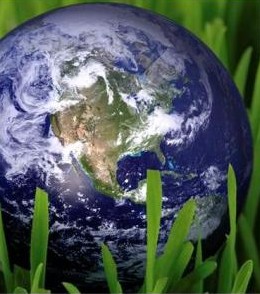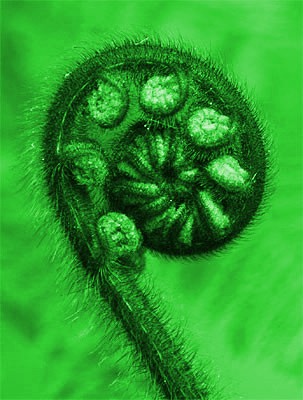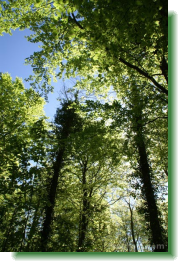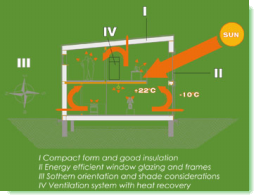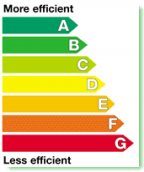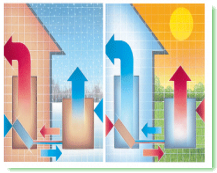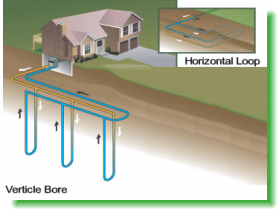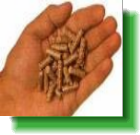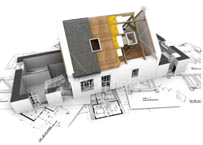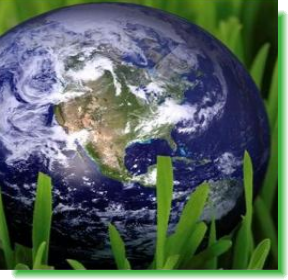eco
design
OUR
MISSION
WHO
WE ARE
PROJECTS
ECO
TECHNOLOGY
CONTACT
US
Eco
Architects Ireland mission is it to work within a set
ecological & environmental design strategy to assist reducing carbon
emissions.
Many people are becoming increasingly aware
of the environmental problems facing our planet and hence our everyday
lives. These global problems are daunting and it is common to feel that
individual efforts to conserve resources and reduce the carbon footprint
of our human activities has little or no effect.
Our projects aim to demonstrate that living
and working in harmony with the micro-cosm of a individual site can
develop an understanding about minimising our day-to-day impact on it
and on the macro-cosm of our world as a whole.
The
Current Climate & Eco Design Standards
National
governments are striving to find solutions to achieve reductions in CO2
emissions and energy consumption. The Irish Government & the EU has
set itself challenging targets over the next decade including promoting
the idea that all new housing should be carbon neutral by 2016.
The aim of
our projects is to tackle these issues and to develop an understanding
at the same time, by re-thinking what can be achieved at a local level
through integration, education and co-operation.
Our
Mission
Eco
Architects Ireland projects aim to integrate health,
education and working with the natural environment. Our buildings will
generally generate their own clean energy from on site renewable
resources, harvest their own water and recycle waste materials causing
no pollution or CO2 emissions.
Our
buildings will be designed to passive solar guidelines following the
Association for Environment Conscious Buildings, AECB, Silver, Gold or
Platinum standards comparable with the acclaimed zero heat German Passiv
Haus projects.
General
Eco Aims for the Site Beyond the Building
Minimise disruption to site flora and fauna
both during construction and subsequent use.
Increase in bio diversity. New trees and
plants will be planted and more planned for the future.
The landscape will be managed to promote a
wide range of native species of flora and fauna as part of the on going
management plan for the site.
An increase in biomass (timber, straw, etc)
to counter the effects of construction and energy use, so that over a
period of time the net CO2 emissions will be negative.
Our
Approach
From the outset our key projects aim to
inspire and inform future projects and for each new building to be an
opportunity to create a demonstration model of innovative partnership,
between integrated health, environmental education and ecologically
sustainable architecture.
Hence an environmental strategy has been
developed to promote a non-polluting, resource conserving development,
which is respectful to the immediate and wider environment and people as
possible. This has been considered in the broadest holistic sense,
developing a `green' strategy, which gives real value and respect to
those issues, not as `optional extras' or as `add ons', but as
generators of genuinely sustainable and holistic projects.
Conservation
of Energy
To reduce to a minimum the consumption of
fossil fuels required to service the building. (i.e. zero )
Reduction of CO2 emissions, to a minimum
within the given site restraints and client briefing parameters.
To reduce embodied energy used in the
construction process to less than 60% of the `norm' for an equivalent
project.
Super insulated building fabric with
efficient insulation in roofs, walls and floors. (U-value< 0.12
Watts/m2 °C)
Integrated heat retaining thermal mass to
walls and floors to a minimum 75% of visible surface area.
Passive solar design, through orientation,
window layout and integration of solar pre heat buffer spaces.
Super efficient glazing; double or triple
glazed units (U-value< 1.1 Watts/m2 °C).
eco
design
Airtight construction tested to achieve 1.5
to 5 air changes per hour at 50 Pascal’s.
Provision for careful detailing to minimise
cold bridging and incidental air infiltration.
Use of heat exchangers and heat recovery
ventilation systems to recover 60-70% of extracted heat from
ventilation.
Use of low
energy appliances - fridges, cookers, compact fluorescent light bulbs
Working
With The Environment
Maximise use of natural renewable energy
sources available on site including:
Use of passive solar energy, south facing
sun buffer spaces to provide passive solar gain.
Integrated design of thermal mass collector
systems to store and radiate latent solar energy.
Maximise natural day lighting internally,
minimising use of artificial light.
Wind power using a micro generation wind
turbines. From 2.5kW to 15kW’s
Hydro Power
using cross flow, Arcademies Screw or Pelton wheel turbines
Use the sun's energy to power tube solar
collectors to pre-heat hot water.
Use of solar photovoltaics to produce
electricity.
Ground
source heat pumps to extract latent heat from below the ground for low
temperature under floor heating systems.
Use of local bio-fuels; pellet, chip or
hopper fed log boilers to provide back up for space heating &
cooking.
Use of photosynthesis to break down grey
water in natural biological sewage systems.
Minimising
Use of New Resources
Where possible recycle and reuse existing
buildings or products rather than extracting new raw virgin materials
and manufacturing new products from virgin materials.
Reduce water consumption to 70% of the norm
and actively collect and recycle water. Collection of rainwater from
roofs via a Rainharvester system. Further reduce Water consumption by
the use of water efficient WCs & composting toilets, aerated low
flow spray taps and shower heads.
Collect and reuse waste for composting and
recycling including dry `compost' toilets, kitchen wastes etc.
Ensure that after the useful life of the new
buildings they will not scar or pollute but will be dismountable,
recyclable and as far as possible, biodegradable.
Working
with Respect for your Site and Our Planet
Avoid the use of materials from non
sustainable sources or which harm the environment or people in their
production, extraction, use or disposal. Prioritise use of fair trade
FSC certified timber products.
Create buildings of quality and beauty,
which embody a positive connection with the site, using local resources,
people and products.
Aim for minimum impact on the site and
maximise varieties of flora and fauna habitats through development of
microclimates and bio diverse landscaping. Incorporate principle of
Permaculture gardening as appropriate.
Use of natural and 'local' building
materials to maximise connection with the site and reduce
transportation, whilst maintaining the sites established eco
systems.
Summary
The above criteria outline a `green
strategy’, which can help us to establish the optimum holistic
environmental agenda. This strategy can be further developed with
partners and other parties through the design process and as the
proposals develop ongoing environmental assessments will be made to
ensure the aims are being achieved.
Our projects, when implemented set
themselves apart from other projects by being at the leading edge of the
integration of innovative partnership working arrangements, sustainable
design, and environmental education.
WWW. IRISH
ECO ARCHITECTS.COM
M.C.M
Architecture & Surveying Ltd t/a Eco Architects
Ireland © MCM Architects
2009:: Design by NASSY
Eco
Architects Ireland - Innovation,
Attention to Detail, Vision, Thinking out of the Box, Expertise.
Other
useful interesting links below














